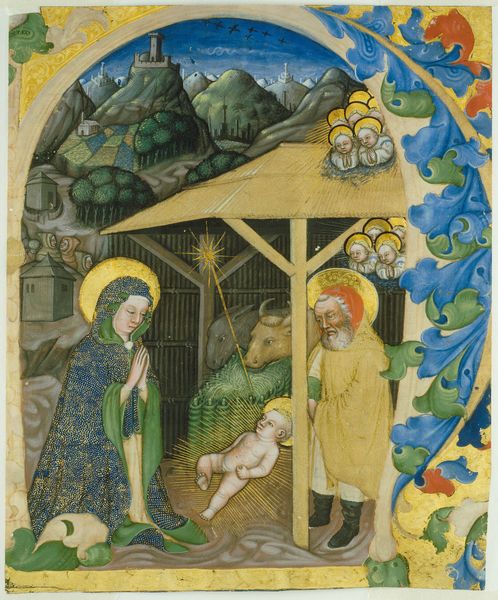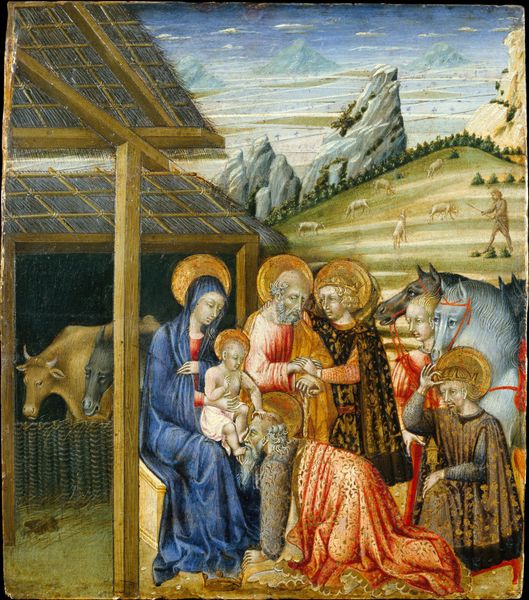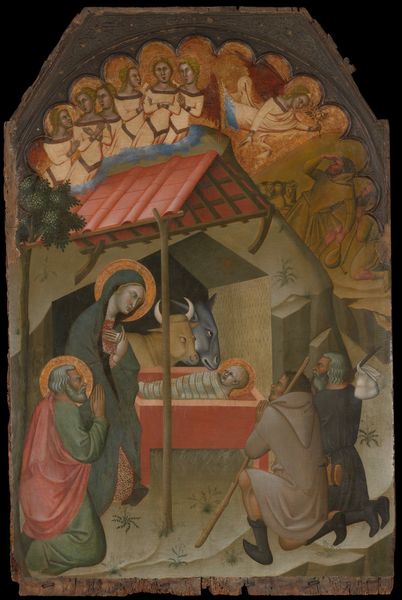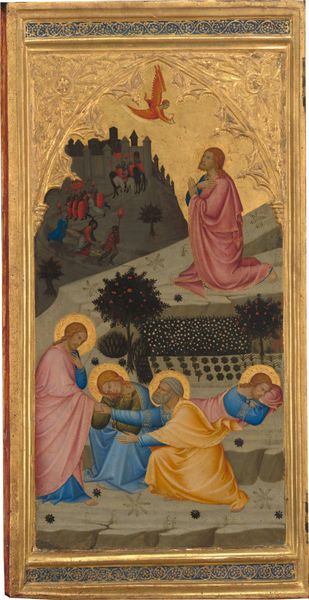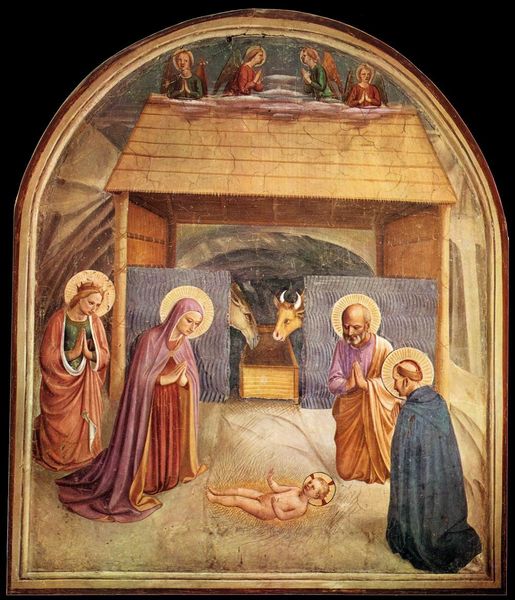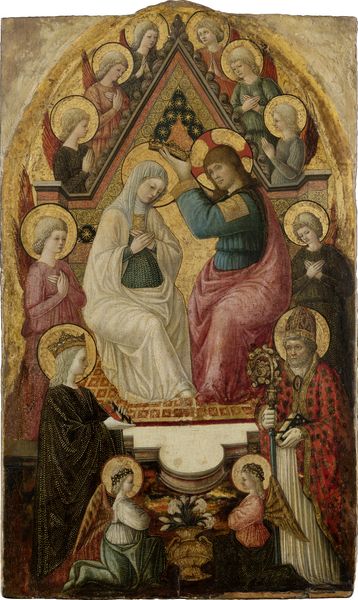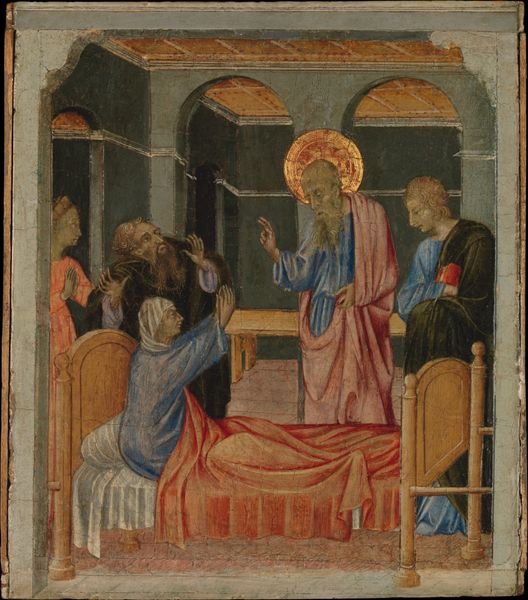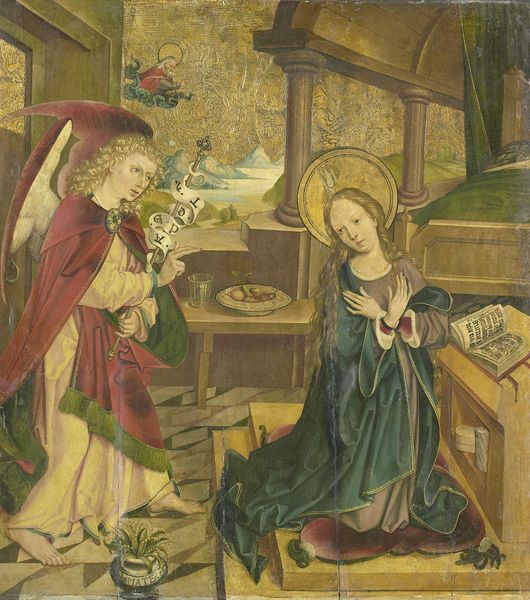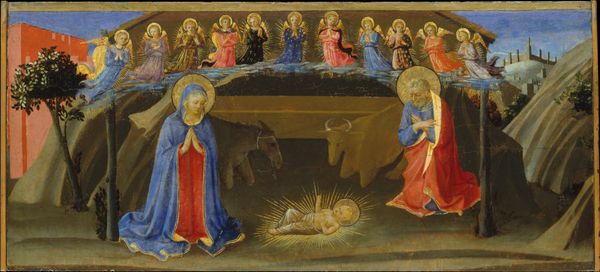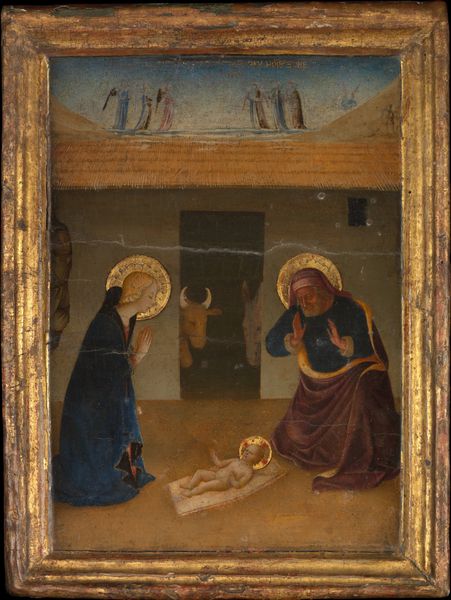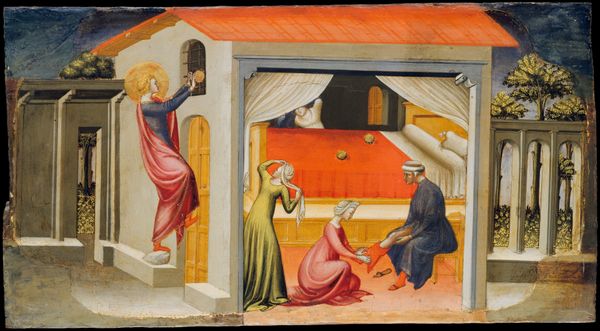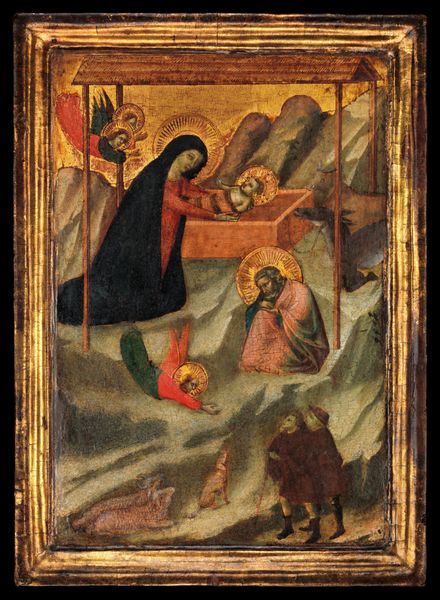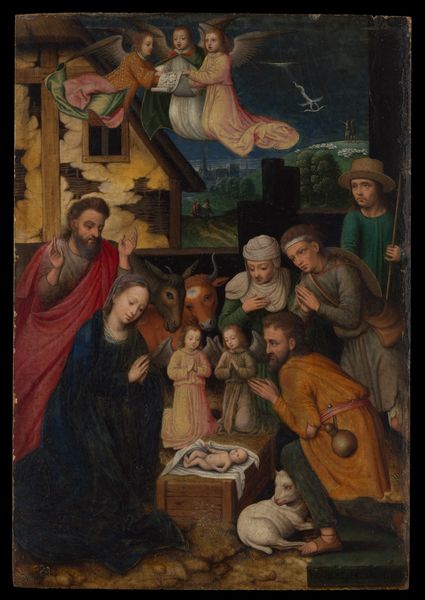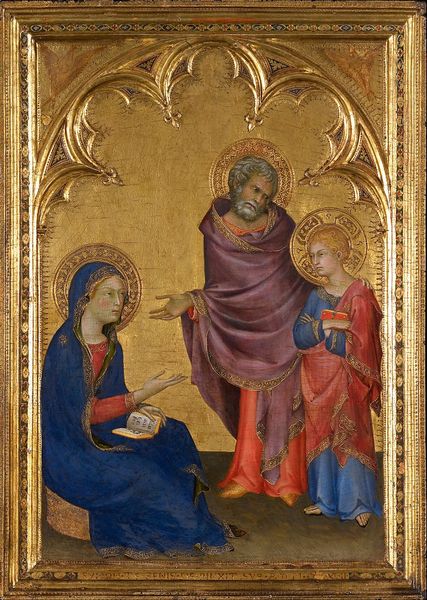
tempera, painting
#
portrait
#
narrative-art
#
tempera
#
painting
#
figuration
#
oil painting
#
naive art
#
painting painterly
#
watercolour illustration
#
history-painting
#
italian-renaissance
#
early-renaissance
Dimensions: 11 1/8 x 6 1/2 in. (28.26 x 16.51 cm) (panel)11 x 6 1/2 in. (27.94 x 16.51 cm) (sight)14 5/8 x 9 x 1 3/4 in. (37.15 x 22.86 x 4.45 cm) (outer frame)
Copyright: Public Domain
Curator: This painting, "The Nativity," rendered in tempera, dates back to around 1425, crafted by Fra Angelico, and now residing here at the Minneapolis Institute of Art. Editor: It has an almost toy-like quality, wouldn’t you agree? The straw roof of the stable looks meticulously assembled, and even the figures seem carefully placed. The gold leaf background lends a otherworldly glow. Curator: Absolutely, that golden background and halos reflect the spiritual significance embedded within the religious iconography of the Early Renaissance. The even, distributed light flattens the image. This was, after all, intended as an object for contemplation, to foster devotion. Editor: Yes, and look closely at the humble materials – the woven straw, the roughly hewn timber. It makes me think of the labour and the societal importance of creating these precious devotional images and transporting such objects to serve that spiritual function. Did Fra Angelico and his workshop see themselves as humble craftsmen dedicated to their labor? Curator: Precisely! And it is precisely the societal function you pointed out, particularly of the church and elite families, commissioning work from artists like Fra Angelico. The materials used—tempera on wood—were themselves symbolic of durability and timelessness. Gold specifically signified divinity, it served to inspire religious feelings. Editor: Indeed. Consider the perspective: it's not scientifically accurate, yet it guides our eye towards the newborn Christ. The materiality underscores its sacred purpose. It’s more about eliciting faith than realism. Curator: Right, the "naive" perspective, as some might term it, is not a failing but rather a choice rooted in conveying theological meaning, using the figures and location of the landscape to emphasize the message of God made man for salvation. Editor: Looking at "The Nativity", I find it's fascinating how humble materials and careful production contribute to such a potent image of the divine. Curator: Indeed, contemplating the interplay of the worldly and spiritual, labor and elite influence, and technique and symbolism provides such an amazing and fruitful dialogue of culture that still speaks volumes today.
Comments
No comments
Be the first to comment and join the conversation on the ultimate creative platform.
